Kovalam Beach
Text by Susie Parr
In the early morning, a few elderly Westerners enter the sea where it is relatively calm, protected by a rocky outcrop. Later, this spot will become the launching place for the speed boats and therefore out of bounds for swimming. Floating in the swell, the bathers look down the beach. No-one is in the water just a few yards along, because the unhindered waves are so powerful, and the undertow so strong.
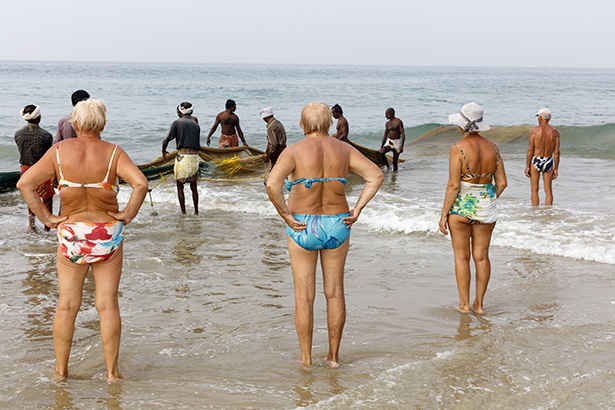
Aside from one or two early sun-worshippers, already spread-eagled on their loungers, the only other people on the beach are the fishermen, hauling in the nets dropped from their boats some hours before. Around fifteen men pull on each side, slowly bringing the catch nearer. The men heave and chant in a rhythm, their efforts more effective when all work together. The white floats on the nets gradually approach. As the haul is finally dragged onto the beach, they huddle around to examine their catch. But it is meagre: roughly 3 kilos of small fish and flounders, barely 500 rupees’ worth for the hours of work and effort. Grumbling, the men turn away, eyeing the few tourists who are watching, photographing the scene. One, who speaks English, asks the spectators for cash to compensate for this sorry turn of events.
The seas have been so over-fished that poor catches like this are sadly becoming commonplace. No doubt within a few seasons the men will enact these ancient rituals purely for the benefit of tourists. They will become like the Chinese fishermen in Fort Kochi who lower their nets into the polluted water as a photo opportunity: more lucrative than trying to catch and sell fish.
As the morning unfolds, more Westerners start to emerge from their hotels and apartments, into the stupefying heat. They wander slowly past the cafes and stalls selling knick knacks, sarongs, sun hats and pashminas, either ignoring or patiently declining the invitations that accompany their progress. ‘Good morning! You want tea, coffee, juice, sandwich?’ ‘Mango, pineapple, banana?’ ‘I am a tailor. I make these myself. Good price.’ ‘ Special nut, sir?’
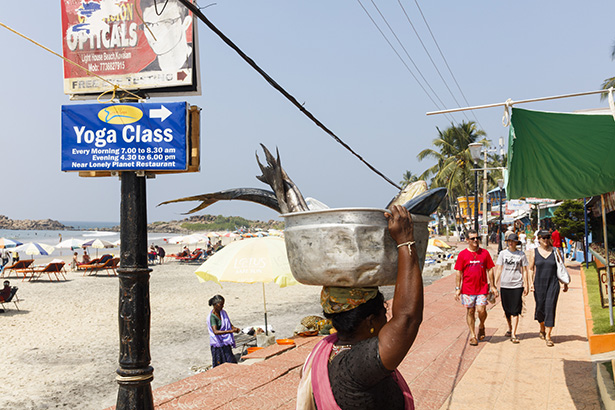
Kovalam’s shop owners, waiters, beach vendors, tuk tuk drivers and sun-bed proprietors seem eternally optimistic, refusing to be deterred by a shake of the head or patent lack of interest in their offers. ‘Maybe later madam?’ ‘What time you going back?’ ‘How many days in Kovalam?’ ‘ Maybe later you want to buy a lamp?’ ‘Later for a nice lunch?’
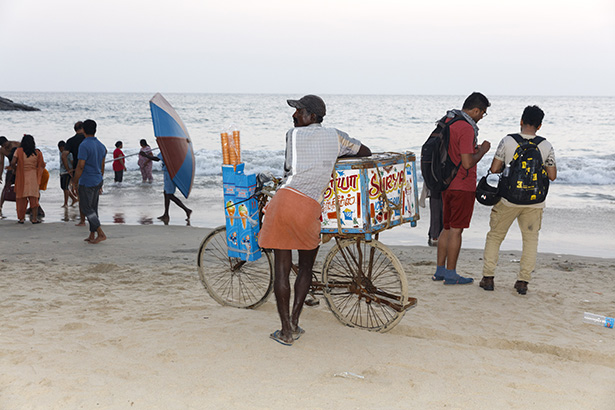
They can seem predatory, particularly those who relentlessly hassle their victims, persisting in touting wares or snacks that have been refused countless times, but here on the beach there is still an underlying sense of good will, courtesy and humour. Waiters and shopkeepers are friendly, liking to chat and share a joke. They are helpful to the older, frailer visitors, and kind to the young. The man who rented me a sun-bed took care to adjust the umbrella periodically as the day wore on, so that I could be in constant shade. When I expressed my concern about the force of the waves, he smiled and promised me the water would be still as a pond the next day, but only if I came back to his patch. I did, for he was charming, but of course the waves were even more mountainous and the undercurrent more intimidating.
This is not a particular problem if you can swim, although giant waves can arrive unexpectedly, catching you unawares, spinning you head over heels under the surface, tugging your footing from beneath you. Two lifeguards, clad in light blue uniforms, patrol each beach, keeping close eye on the colour of the water. If this changes, it suggests that the sand is being whipped up by dangerous undercurrents. The lifeguards direct bathers away from these trouble spots, blowing whistles and waving red flags, as if despatching a train.
The lifeguards put in extra effort when groups of Indian bathers enter the water. Predominantly men, youths and boys, most seem unable to swim. Holding hands, egging each other on, they wade towards the place where the waves break. As the water crashes over their heads and spins them so they bob like corks in the foam, they roar with delight. Swimming trunks are a rarity- most of the men enter the water in their underwear.
As more and more men and boys pile into the surf, the lifeguards change from railway guards to traffic police, blowing their whistles loudly to get attention and using vigorous hand signals to direct the groups to one side or the other, or beckon reckless dippers into shallower water.
Mostly, Indian women bathers are much more cautious, tucking up their saris and kurtas or rolling up their jeans to paddle at the water’s edge. Small groups of women venture into deeper water, ducking down as if to take a bath, and soon they are completely soaked. They scream with excitement as they are knocked over by the waves or lifted on the swell. One woman, spotting a shoal of fish swimming in the shallows, uses her sari to net a tiddler.
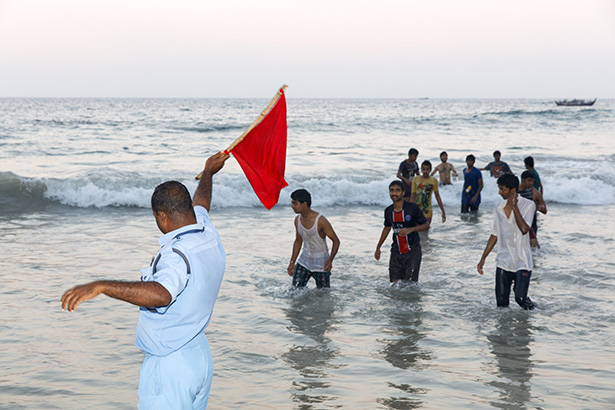
The lifeguard says it is rare to see an Indian visitor actually swimming; those who do swim probably come from Delhi, where they have learned in a pool. Women, he explains, need to keep to shallow water, where their husbands can keep an eye on them.
Most Indian visitors tend to arrive later in the day; they stroll along the beach, gazing with benign curiosity at the spectacle of the Westerners broiling in the sun. Young women, clad in skimpy bikinis, attract sly looks and jokey comments. This is not entirely surprising, given the modesty and elegance of their Indian counterparts, none of whom don bathing costumes. Indeed Westerners of all ages, sizes and shapes think nothing of exposing their often ample flesh, leaving little to the imagination.
The skinny ones on the beach are the fishermen, the vendors and the yoga students, who emerge from their morning session in a trance-like state, some walking serenely along at the water’s edge, some sitting cross legged on the beach in full meditation mode. For lunch they sip water and toy with a salad, eschewing the cold beer, chicken tikka and chips favoured by their compatriots.
On Sundays, Indian visitors outnumber the Westerners, who look on bemused as scores of men and boys enter the water or stroll along the sand in huge groups. The vendors selling tea and coffee, and ice cream, both wheeling their wares on heavily laden bikes, do a good trade. Men wander along with their arms around each other’s shoulders, or their hands loosely linked; not lovers, but brothers, cousins, fathers, sons, uncles, nephews and friends.
Two small boys are absorbed in constructing an elaborate sand castle, complete with moat, bridges and castellations. They have brought their own bucket, spade and plastic moulds from England; sand castles are not part of Indian beach culture, as evidenced by the number of men who stop to admire their work, and take photos. The boys dig on, oblivious to their appreciative audience, occasionally running to the water’s edge to fill the bucket and return it to the moat.
As the sun moves towards the horizon, foreigners repair to the bars and cafes while more Indian groups and families appear on the sand, promenading in the cooler air of late afternoon. Indians are passionate about watching the sun set, and seize any opportunity to snap selfies or set up family portraits against the romantic, reddening sky. Some men cannot resist taking a final dip, even though the lifeguards are ordering everyone out as their shift comes to an end. Most people comply, reluctantly obeying the vigorous whistle blowing and flag waving. Some Westerners, predominantly hippies and yogis, ignore orders, refusing to curtail their sunset swim. The fishermen heave in their afternoon catch, and thankfully it is marginally larger than the morning haul.
Darkness falls, and Kovalam lights up. Displays of fish and seafood appear outside each restaurant: marlin, sea salmon, grouper, prawns and crab.
Out at sea, lights appear on the wooden boats, where men sit through the night, hoping the fish will come.

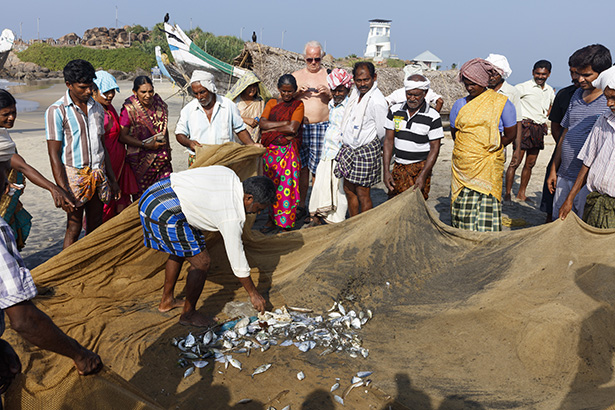
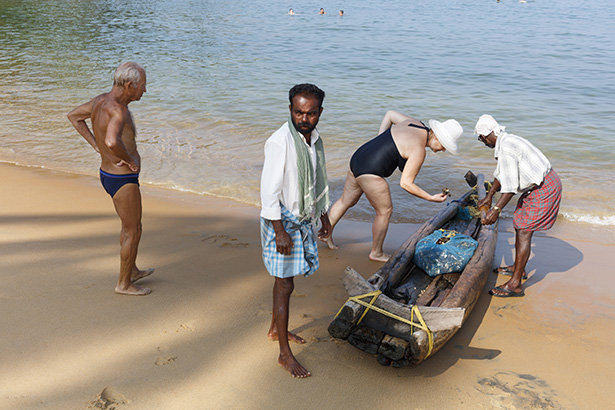
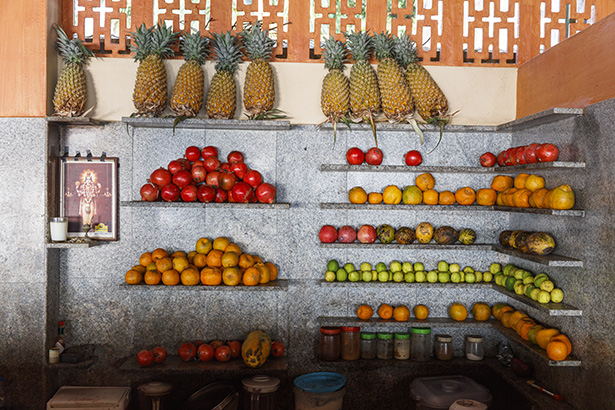
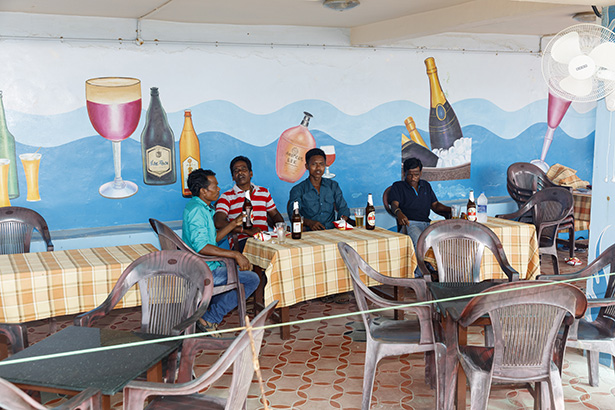
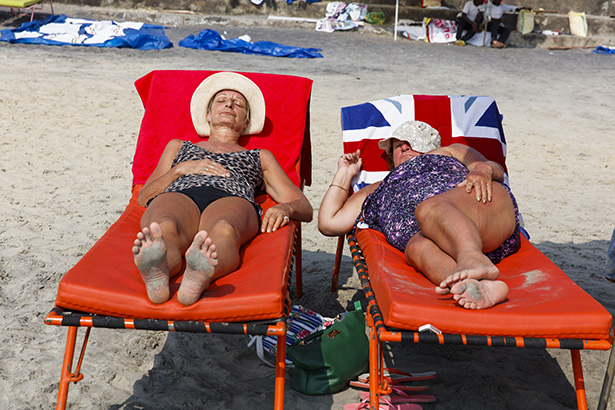
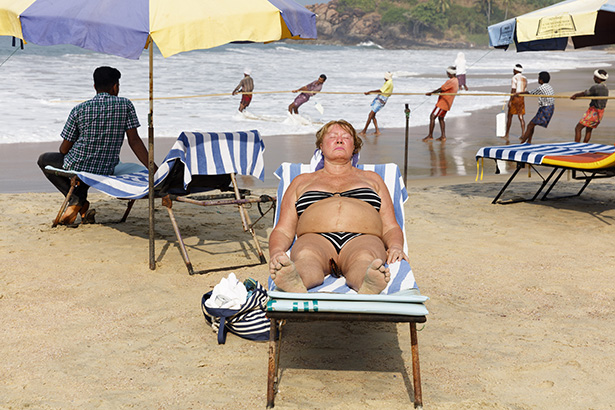
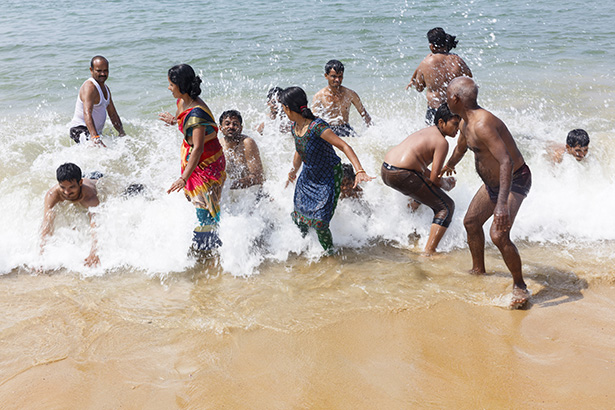
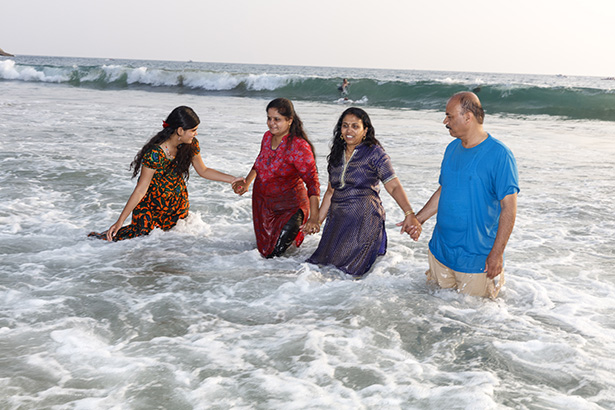

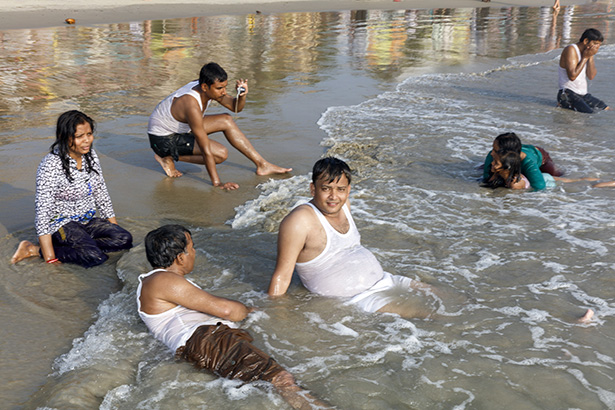
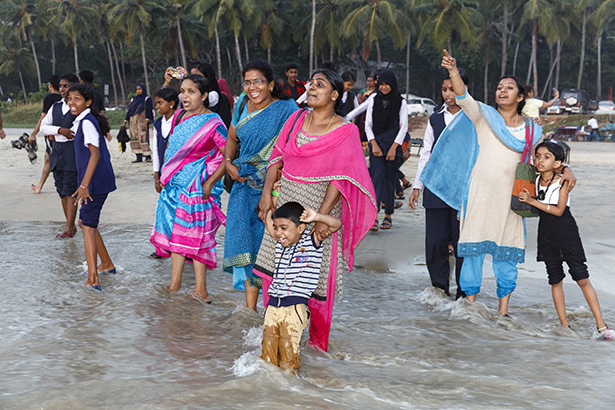
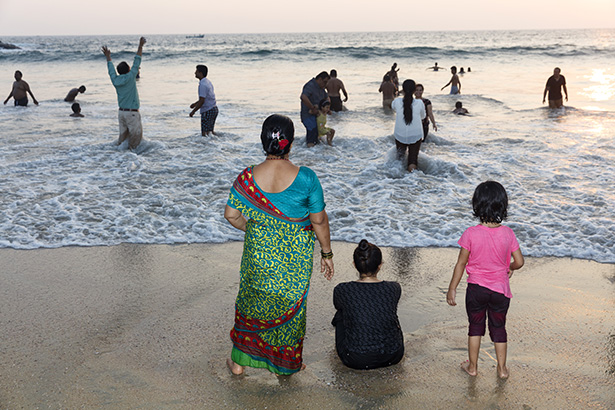
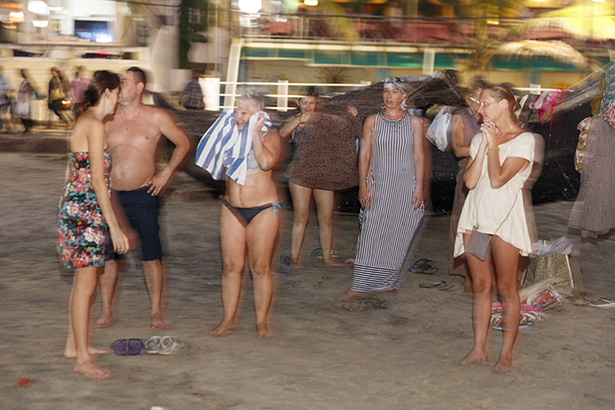

Comments are closed.